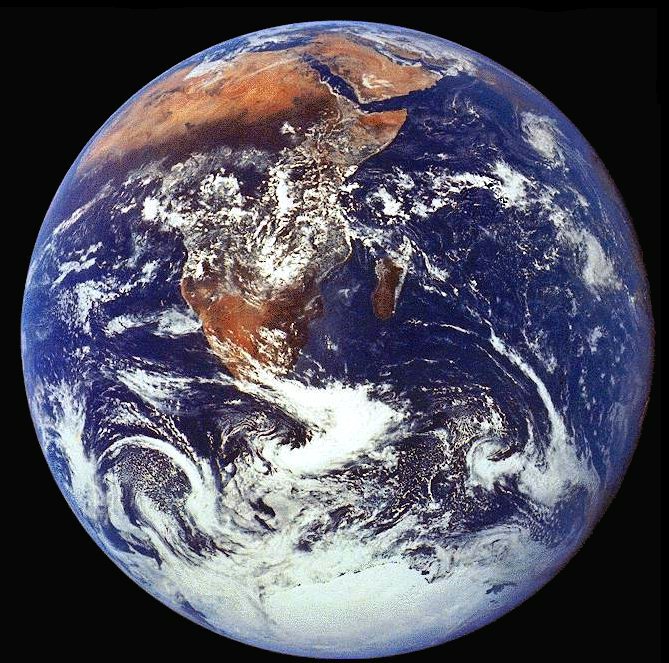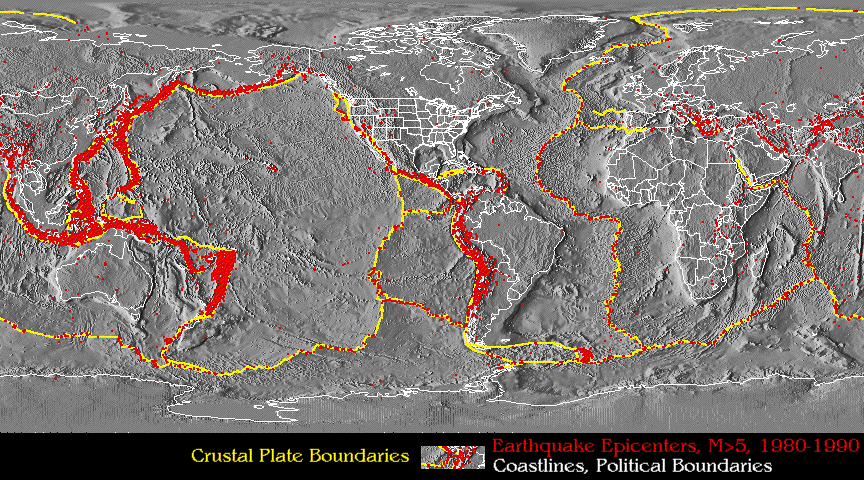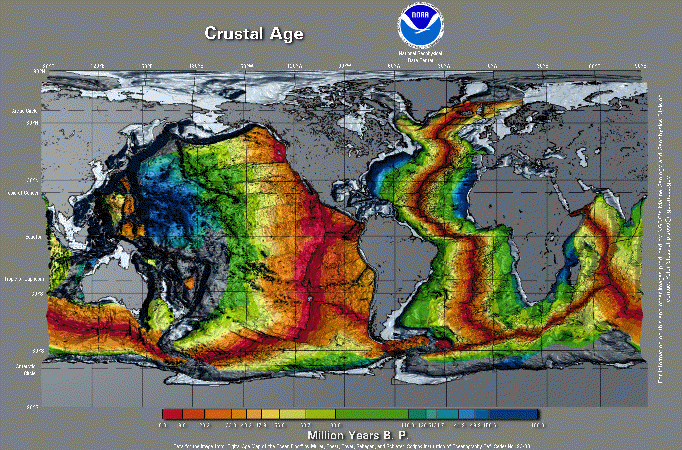
From space we see a Blue Planet - unique in the abundance of water at its' surface, with a dynamic atmosphere.
<-- Click on the image for an expanded view.

|
From space we see a Blue Planet - unique in the abundance of water at its' surface, with a dynamic atmosphere. <-- Click on the image for an expanded view.
|

|
We know from distributions of earthquakes and volcanoes that the outer portion of the solid Earth is tectonically active and is subdivided into a number of relatively rigid plates that slide around the globe - with consequent divergent, convergent, and sometimes simple transform (strike-slip) margins (schematic diagram). |

|
New oceanic crust is being formed at divergent margins and older crust being consumed or under thrust at convergent margins. Based on multifaceted geologic investigations by many people, the positions of most plates can be traced back through geologic time with a high degree of certainty. The plate motions can be recreated in animations to illustrate how varied was the face of the Earth through time. |
Key events/processes:
These and related processes resulted in magmatism, metamorphism, and ultimately in erosion and sedimentation once there was a significant hydrosphere/atmosphere. The distribution of major rock types in space and time constitutes the Geologic Record.
Types of resources
Renewable vs. non-renewable (defining the system)
Geological controls on the distribution of NRsRedistribution of the wealth: geography, climate, and other factors
Economic factors - what determines value of a resource?
Water resources - statistics
Aquifers - supply, quality
Water issues in Texas (mainly)
Global Issues (scarcity)
Alternative fuels - other fossil fuels (e.g., coal), nuclear energy, renewables (e.g., solar, geothermal)
Long-term supply forecasts (reserves)
Adding population growth to the matrix
Rethinking resource utilization (subtitutes, recycling, conservation)
International disputes (e.g., Middle East)
We now appropriate ~54% of accessible runoff (70% by 2025?)
US: >80,000 dams and reservoirs, 90,000 Mwatts of hydroelectric capacity, >15,000 wastewater treatment plants, over $400 billion spent
Lost: >60% of inland wetlands, 50% of stream-miles polluted to some extent, many fish runs decimated (e.g., Columbia R. salmon)
Late 20th century - shift toward new water ethic? Integrity of water resources and ecosystems, fair distributions, sustainability. Also influenced by high costs of maintaining traditional infrastructure, decreasin opportunities.
US per capita water use began to decrease around 1980, with large decreases in industrial use - result of changing economics, role of 'environmental movement'. Projections of global water withdrawals have decreased with time.
Future trends
Important water-related issues:
Water brief
Small comets and the debate over the origin of water on Earth (cf. evidence for water on Mars)

|
A night-view of the U.S. from the Space Shuttle presents a graphic image of population density distribution based on light emissions. |
References
P.H. Gleick (1998) The World's Water: 1998-1999. Island Press, Washington, D.C.